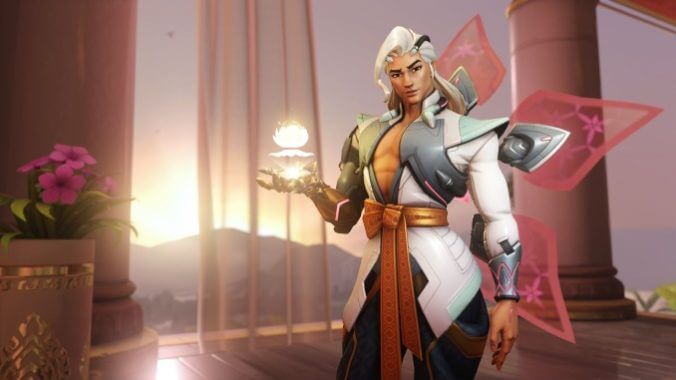Overwatch 2‘s Latest Hero Lifeweaver: A Primer

Hope blooms as Overwatch 2’s Season 4 rolls out, which includes the release of the newest support hero, Lifeweaver. A beautiful Thai “biolight” architect who aids his allies with plant-based constructs, Lifeweaver feels like an interesting first experiment in hero design post-launch. Lifeweaver is available to players at level 45 on the Battle Pass, as well as via specific hero challenges, or instantly via the Premium Battle Pass for 2,000 Overwatch Coins ($9.99).
In the original Overwatch, support was a small category of seven heroes that varied in terms of healing and utility; terms like “main” or “off” healer made more sense when team compositions focused around needing some combination of both. Overwatch 2 changed this by making supports more about aiding a team’s lethality, and less about slowly sustaining them through lengthy engagements. To keep up, older heroes have been tweaked to work with newer characters that favor speed and complexity. It’s a depressingly practical trend that feels like the game sloughing off unique design choices in order to quickly make the re-launched game more in line with current shooters.
Lifeweaver, by contrast, has an ethos that seemingly embraces both games. When speaking about him prior to his launch, developers mentioned that he originally was created to be a “main healer” similar to Mercy. It speaks to the game being stable enough to take chances if it’s once again emphasizing healing, teamwork, and good decision-making skills. However, Lifeweaver has continued Overwatch 2’s “Swiss Army Knife” approach to hero design, which weighs down a good concept with too large of a toolkit. Given that many of his abilities are very open-ended, and rely heavily on game knowledge, many players might end up aiding the enemy team more than their own.
The hero’s primary fire, called Healing Blossom, is a conjured lotus bloom that can be charged up for a max amount of 65 healing, or fired off quickly to do less healing faster. The charge time has also been reduced since the hero was revealed, taking it down to one second. It can also be cast while moving, making it easy to pop heals on a teammate while peeking from behind cover.
Lifeweaver, like Mercy and Torbjorn, can bring out an alternate “weapon” called Thorn Volley, which allows him to shoot tiny pink projectiles from his hand, reminiscent of The Needler from Halo. The spread on the thorns gets bigger the farther from enemies the player is, meaning that this is not something to be used regularly, but rather to fill in damage when enemies are low or to help defend yourself at close range. This feels consistent with older support design decisions, where damage is not as important.
His additional abilities are the bulk of his utility, and also have the most potential for strategy and creativity. Petal Platform, which is on a 12-second cooldown, conjures a small flower that can be activated by anyone (including enemies) and will raise them a decent distance into the air before disappearing a short time later. This allows you as the player to create your own high ground, raise a teammate for a better position with ults, or lift an enemy upwards to keep them from killing your squad. Having a way to quickly go vertical in Overwatch has been limited in other heroes, and the ability to do that to enemy players more effortlessly than, say, a Mei wall, is a first.